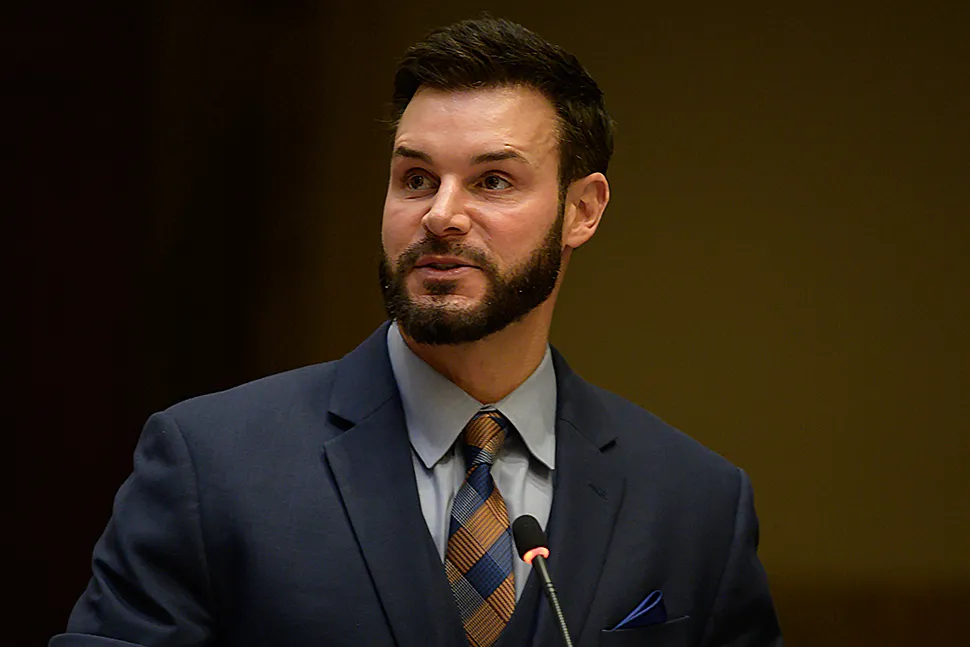“Where does it come from, the ignorance that has been on display of late?” Greg Huffman asked in Facing South four years ago. “In the college-age photos of white men, now elected officials, in blackface? In the simulated Klan lynchings for yearbook laughs? In mischaracterizations of black slaves as ‘indentured servants?’ In the denials that slavery was the central cause of the Civil War?”
The ignorance sprang from the United Daughters of the Confederacy, added Huffman. More on that in a minute.
Meanwhile, the grotesque mischaracterization of slavery is back in the news. Florida Gov. Ron DeSantis is stoutly defending the Sunshine State’s new public school curriculum which makes teachers teach that slavery wasn’t all bad, that it was a boon to some Black people because in bondage they could develop “skills which, in some instances, could be applied for their personal benefit.”
In other words, slavery was a trade school, according to the curriculum-crunchers and DeSantis, who’s trying mightily to out-Trump Trump with the MAGA white folks and win the GOP presidential nod.
It is true that slaveholders taught a few slaves carpentry, blacksmithing, and other trades. But the idea was to benefit the enslaver, not the enslaved.
DeSantis protested that he didn’t have a hand in the history hatchet job. In a recent column, Washington Post opinion writer Eugene Robinson quoted the governor: “They’re [the curriculum writers] probably going to show that some of the folks that eventually parlayed, you know, being a blacksmith into doing things later in life.”
Added Robinson: “Where to begin? I’ll start with my own family history. One of my great-great-grandfathers, enslaved in Charleston, S.C., was indeed compelled to learn to be a blacksmith. But he had no ability to ‘parlay’ anything, because his time and labor were not his own. They belonged to his enslaver. He belonged to his enslaver.
“To pretend my ancestor was done some sort of favor by being taught a trade ignores the reality of race-based, chattel slavery as practiced in the United States. He was sold like a piece of livestock at least twice that I know of. To say he ‘developed skills,’ as if he had signed up for some sort of apprenticeship program, is appallingly ahistorical. As was true for the millions of other enslaved African Americans, anything he achieved was in spite of his bondage.”
Ah, but ignoring racist reality is the bottom line of the whole MAGA GOP.
In his essay, which is still timely, Huffman didn’t pull punches: “The poisonous Lost Cause lessons were taught to multiple generations of Southerners to uphold institutionalized white supremacy – in part through public school curriculums shaped by the United Daughters of the Confederacy (UDC). More famous these days for their controversial Confederate monuments, the UDC had an almost singular focus on making sure the Lost Cause propaganda was so ingrained in the minds of Southern youth that it would be perpetual. Their most effective tool? School textbooks.”
Saida Grundy similarly wrote in The Guardian last Sunday: “In the mid-20th century, a generation after the civil war, the United Daughters of the Confederacy set out to rebrand the image of slavery. The group, composed of female descendants of Confederate soldiers, was fixated on returning the country’s social order to its antebellum racial hierarchy. It sought to reimagine slavery as a benign institution, and to glorify the ‘lost cause’ of white southern insurrectionists who attempted to overthrow the government in slavery’s defense. The place that served as ground zero for the UDC’s revisionist-history effort? Schools.
“In one of its most successful campaigns, the UDC called for the widespread adoption of textbooks that trivialized the horrors of slavery. As a result, a 1954 middle school textbook titled History of Georgia claimed that a typical slave owner ‘often had a barbecue or picnic for his slaves. The [enslaved] often had a great frolic. Even while working in the cotton fields they sang songs.’ (It is no coincidence that the book was published the same year the NAACP won the supreme court case to desegregate public schools.) And while most contemporary school texts have since moved towards acknowledging that slavery and the subsequent Jim Crow era were reprehensible, organized efforts against teaching accurate racial history continue to occur.”
Aided and abetted by the United Confederate Veterans and Sons of Confederate Veterans, the UDC actually launched its first big push to torture the truth about slavery and the “Lost Cause” in textbooks even earlier – in the late 19th and early 20th century. Huffman quoted a UDC national president: “It has ever been the cherished purpose of the Daughters of the Confederacy to secure greater educational opportunities for Confederate children, and by thorough training of their powers of mind, heart and hand, render it possible for these representatives of our Southern race to retain for that race its supremacy in its own land.”
Murray State University historian Brian Clardy said he got a hefty helping of Lost Cause propaganda going to school in South Fulton, Tenn., where he was born and reared.
“I heard the stories: the slaves were happy; Lincoln was an agitator; it was the ‘War Between the States,’ not the Civil War,” said Clardy.
“The war was all about ‘states’ rights,’ not slavery. That was the paradigm people were learning from. That’s how the Civil War was taught.”
Fast forward to today, Clardy said, when “we’re seeing that same old playbook being brought out again – ‘the slaves got valuable skills being slaves.’ That’s just a rehash of ‘the slaves were happy being slaves.’ Again, we’re also hearing that the war was not about slavery, it was about ‘state sovereignty.’”
Clardy said to understand the current white supremacist-white nationalist campaign to whitewash racism, it’s important to understand its antecedents.
Examples are plentiful. But Clardy cited two: the 19th-century speeches of Sen. John C. Calhoun, and James J. Kilpatrick’s 20th-century newspaper columns.
Dubbed the “Sentinel of the South,” Calhoun rabidly defended Dixie’s peculiar institution and vehemently denied that the federal government had any right to abolish it. (He also argued that states had the right to nullify federal laws and even to secede from the Union.) In an 1837 Senate speech, he praised Black bondage as “a positive good.”
Kilpatrick echoed Calhoun, especially in the 1950s and 1960s. Just as Calhoun raised the “states’ rights” cry in defense of slavery, Kilpatrick yelped “states’ rights” in opposition to federal civil rights legislation. In 1964, he submitted an article to The Saturday Evening Post in which he claimed “the Negro race, as a race, is in fact an inferior race.” Garrett Epps wrote about this in The Atlantic when “Kilpo” died in August, 2010, at age 89. (The Post refused to publish the piece.)
“His writings were hateful, but more than that, they were effective,” Epps explained. “Almost single-handedly, Kilpatrick laid the intellectual foundations for ‘massive resistance,’ the extremist Southern strategy of defying the Supreme Court by closing public schools to thwart court desegregation orders.”
Thirteen years later, with DeSantis’s blessing, Florida — the third Confederate state to secede — is resurrecting Calhoun’s “positive good” notion of slavery.
Kay Ivey, the Republican governor of Alabama — the fourth slave state state to go out of the Union — signed a measure in which the GOP-controlled state legislature created only one Black-majority congressional district, defying a Supreme Court order requiring at least two. After she inked the neo-Jim Crow bill, Ivey trotted out a variant of the Calhoun-Kilpatrick “states’ rights” line: “The Legislature knows our state, our people, and our districts better than the federal courts or activist groups.”
--30--
| Tip Jars |








